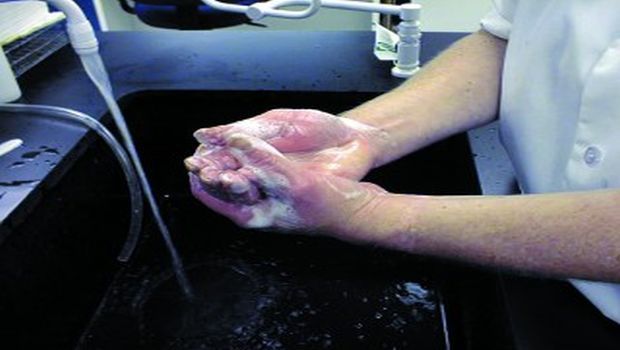American Cleaning Institute Urges FDA to Preserve Critical Antibacterial Products, Ingredients

The American Cleaning Institute (ACI) is urging the Food and Drug Administration (FDA) to re-evaluate all data relevant to the safety and efficacy of antibacterial healthcare ingredients and make affirmative findings that they are generally recognized as safe and effective. ACI submitted detailed comments to FDA on the agency’s proposed rules governing over-the-counter antiseptic healthcare products.
“The active ingredients used in healthcare antiseptic drug products have very favorable benefit/risk ratios demonstrated over many years of extensive use,” wrote Dr. Paul DeLeo, ACI associate vice president of environmental safety. “These products clearly save lives by reducing bacterial transmission which can cause infections in healthcare settings. “By reducing healthcare-associated infections, these products also reduce healthcare costs. There is no evidence of adverse health effects in humans as a result of the use of healthcare topical antiseptic products. In addition, a robust body of research supports the safety of active ingredients used in healthcare topical antiseptic products.”
ACI also said FDA should consider all existing data relevant to the efficacy of healthcare antiseptic active ingredients and indicate where specific data gaps exist, if any, for each active ingredient.
“For the agency to suggest that previous tests of the same or similar strains are no longer valid is arbitrary and the requirement for new repeated tests is unduly burdensome,” wrote DeLeo.
ACI also asked FDA not to change safety classifications of several key antibacterial ingredients, stating that “FDA has provided no data to indicate that there is any safety issue associated with the use of products containing these actives, or that they are ineffective in their use.”
Among ACI’s other recommendations:
• FDA should consider the level of human exposure to each of the antimicrobial active ingredients and assess the potential for harm from those exposures prior to determining the need for additional safety data.
• FDA should formally recognize and acknowledge a separate subcategory for Food Handler Products before the Consumer Antiseptics Rule or Health Care Antiseptics Rule is finalized.
• FDA should set an alternative timeline for the finalization of the monograph and engage with stakeholders to develop appropriate efficacy and safety data requirements and detailed protocols to generate these data.
ACI reiterated the critical nature of preserving a wide palette of antibacterial products and ingredients to healthcare providers and facilities: “The clinical benefit of topical antiseptics in healthcare settings is well established. Health Care Antiseptics prevent between 22,100 and 223,100 cases of hospital-acquired bacterial infections every year, with a corresponding avoidance of $175 million to $4 billion annually in costs for hospital-acquired infections. This estimate does not include additional bacterial infections that may be prevented beyond those assumed, and it does not include costs associated with hospital readmissions, short-term rehabilitation, long-term follow-up care, lost wages, lost productivity or transportation.”
ACI’s complete comments are available at ACI’s antibacterial policy web page.
Source: American Cleaning Institute
Newsletter
Stay prepared and protected with Infection Control Today's newsletter, delivering essential updates, best practices, and expert insights for infection preventionists.